Figures & data
Table 1. Attributes of the lake study sites and their fish stocking histories.
Figure 1. Sample site map. All lakes fall within the boundaries of Yellowstone National Park (thick red line). Lake paired replicates are designated by symbol (triangle, square, pentagon).
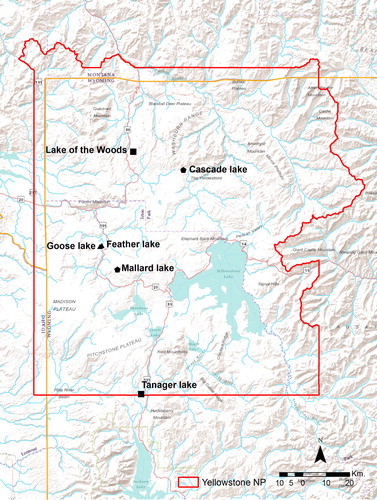
Figure 2. Dissimilarity analysis. (A) Hypothetical trends of diatom assemblage response to trophic cascade effects in terms of resilience, displayed as (B) corresponding dissimilarity trends that would reflect resilience or regime shift as changes in the community assemblage. The calculated dissimilarity trends are shown for the entire diatom assemblage of (C) Lake of the Woods, (D) Tanager Lake, (E) Cascade Lake, and (F) Mallard Lake. The red dotted line represents a critical value of 0.15; points that fall above this line have significant dissimilarity between the baseline assemblage (1850–1920) and the assemblage of the plotted time interval.
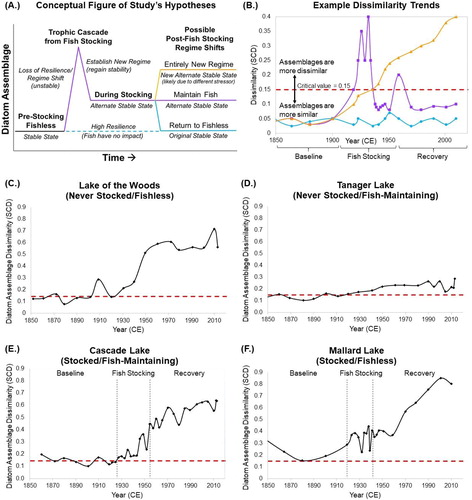
Figure 3. Diatom biostratigraphy of Lake of the Woods, Yellowstone National Park, WY, since 1850. The dotted line designates a zone of significant change in the diatom assemblage as identified by cluster analysis shown in the dendrogram. Diatom and chrysophyte concentrations provide proxies of primary productivity. Lake of the Woods was never stocked and is naturally fishless.
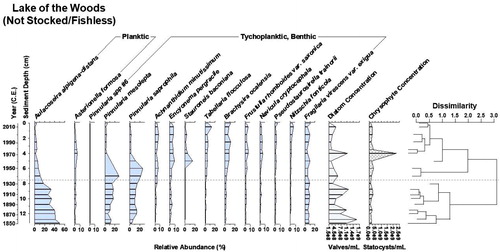
Table 2. 210Pb parameters and sediment accumulation rates for cores from Yellowstone National Park, including 2 reference lakes and 2 lakes included in the fish stocking program.
Figure 4. Diatom biostratigraphy of Tanager Lake, Yellowstone National Park, WY, since 1850. The dotted lines designate zones of significant change in the diatom assemblage as identified by cluster analysis, shown in the dendrogram. Diatom and chrysophyte concentration provide proxies of primary productivity. Tanager Lake naturally has fish and was never stocked.
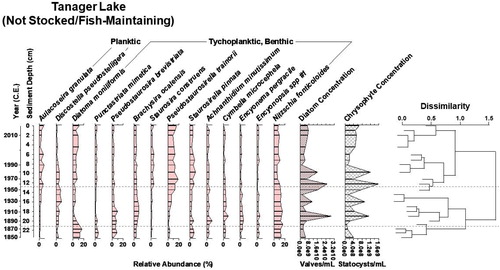
Figure 5. Diatom biostratigraphy of Mallard Lake, Yellowstone National Park, WY, since 1850. The dotted lines designate zones of significant change in the diatom assemblage as identified by cluster analysis, shown in the dendrogram. Diatom and chrysophyte concentration provide proxies of primary productivity. Fish stocking numbers reflect National Park Service records of stocking with native cutthroat trout (Oncorhynchus clarki) and nonnative brook trout (Salvelinus fontinalis); the background shading marks the stocking program duration at this lake (Varley Citation1981). Originally fishless, Mallard Lake returned to a fishless state after being stocked with fish for 24 years.
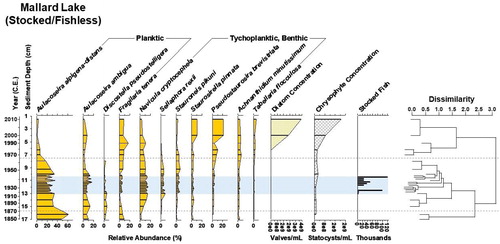
Figure 6. Diatom biostratigraphy of Cascade Lake, Yellowstone National Park, WY, since 1850. The dotted lines designate zones of significant change in the diatom assemblage as identified by cluster analysis, shown in the dendrogram. Diatom and chrysophyte concentration provide proxies of primary productivity. Fish stocking numbers reflect National Park Service records of being stocked with native Montana arctic grayling (Thymallus arcticus montanus) and native cutthroat trout (Oncorhynchus clarki); the background shading marks the stocking program duration at this lake (Varley Citation1981). Originally fishless, Cascade Lake independently continues to maintain a fish population after being stocked with fish for 27 years.
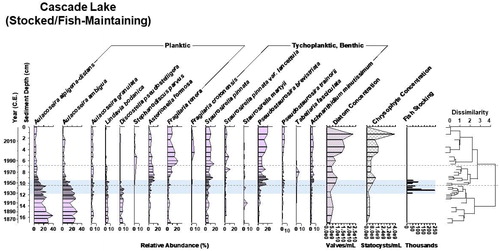
Figure 7. Sediment age (year C.E.) based on sedimentary 210Pb activity (pCi/g) of Lake of the Woods, Tanager Lake, Mallard Lake, and Cascade Lake.
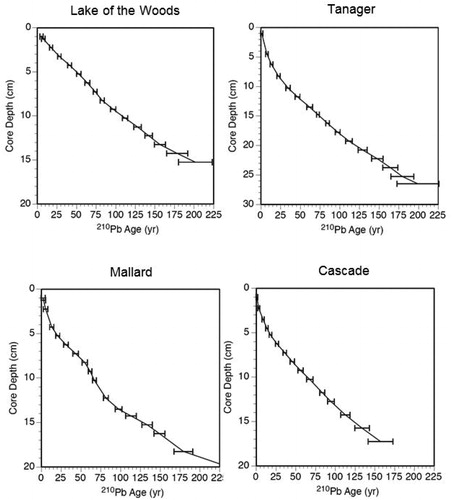
Figure 8. Climate parameters and diatom benthic community assemblage in Yellowstone National Park since 1850. Minimum temperature (a proxy of winter temperature), maximum temperature (a proxy of summer temperature), average annual temperature (C), and average precipitation (mm) with a 5-year smoothing spline for the past ∼100 years from the Mammoth Hot Springs weather station. Snow water equivalent (a proxy for snowpack) with a 20-year cubic smoothing spline for the past ∼200 years is shown relative to the observed 1 Apr snow water equivalent (cm) observed in northern Yellowstone (Pederson et al. Citation2013). Trends in benthic diatom assemblage dominance are shown in terms of percent relative abundance of all benthic species present in the unique assemblages of 4 lakes.
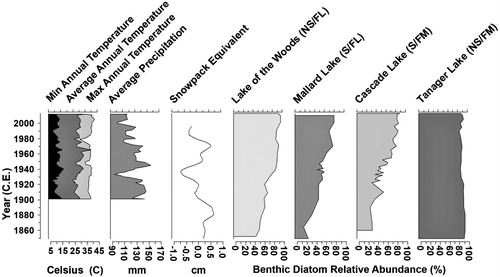
Figure 9. A generalized conceptual flow chart of the hierarchy of environmental controls on the aquatic ecosystems, modified from Fritz and Anderson (Citation2013) to represent variables considered in this study. The hierarchy is represented by the gradation of background color. The thick arrows represent interactions among environmental drivers. Thin arrows represent interconnections between the 2 main categories of environmental controls, climate, and catchment. The fish stocking/trophic cascade entry is characterized by a dotted line to denote its hypothesized rank inthe hierarchy in this study. Note that this flow chart only depicts environmental variables considered in this study and is not comprehensive.

